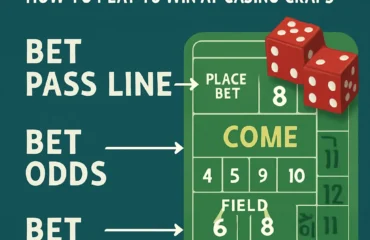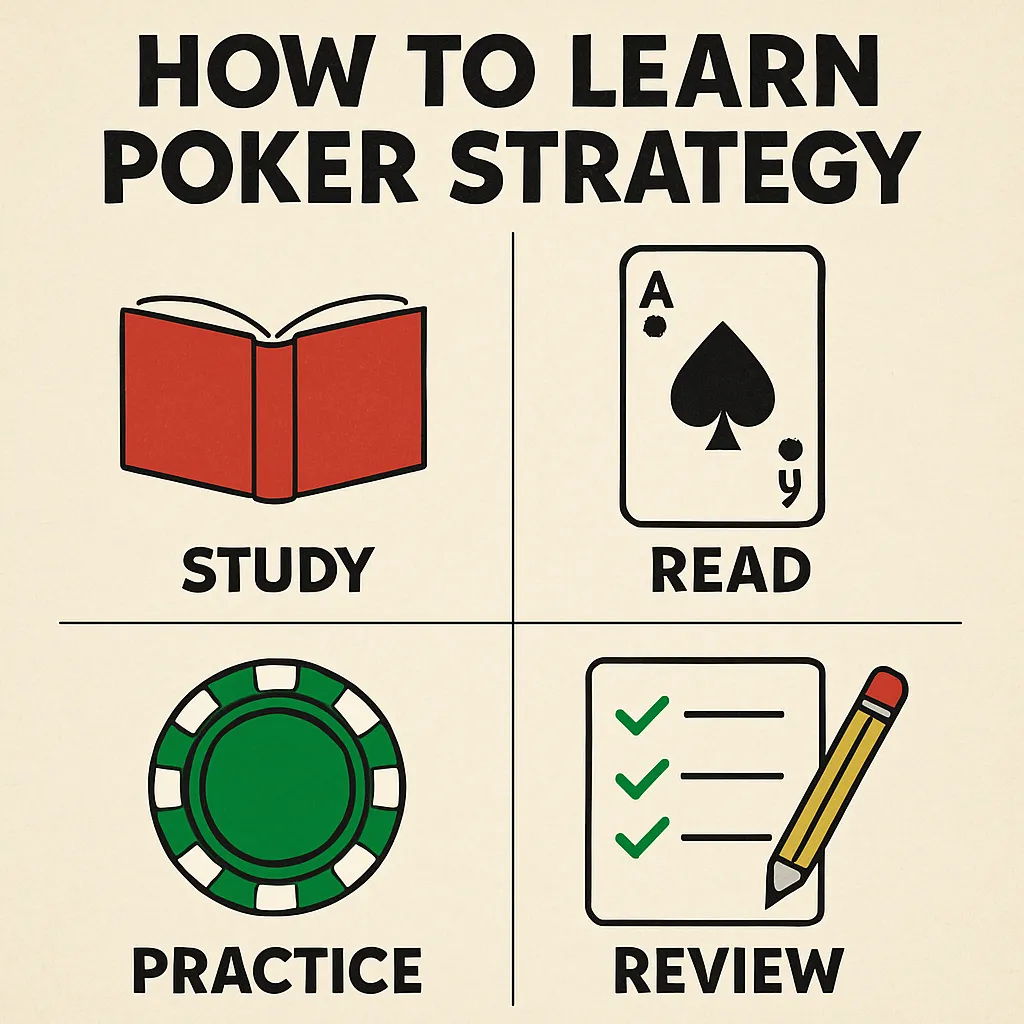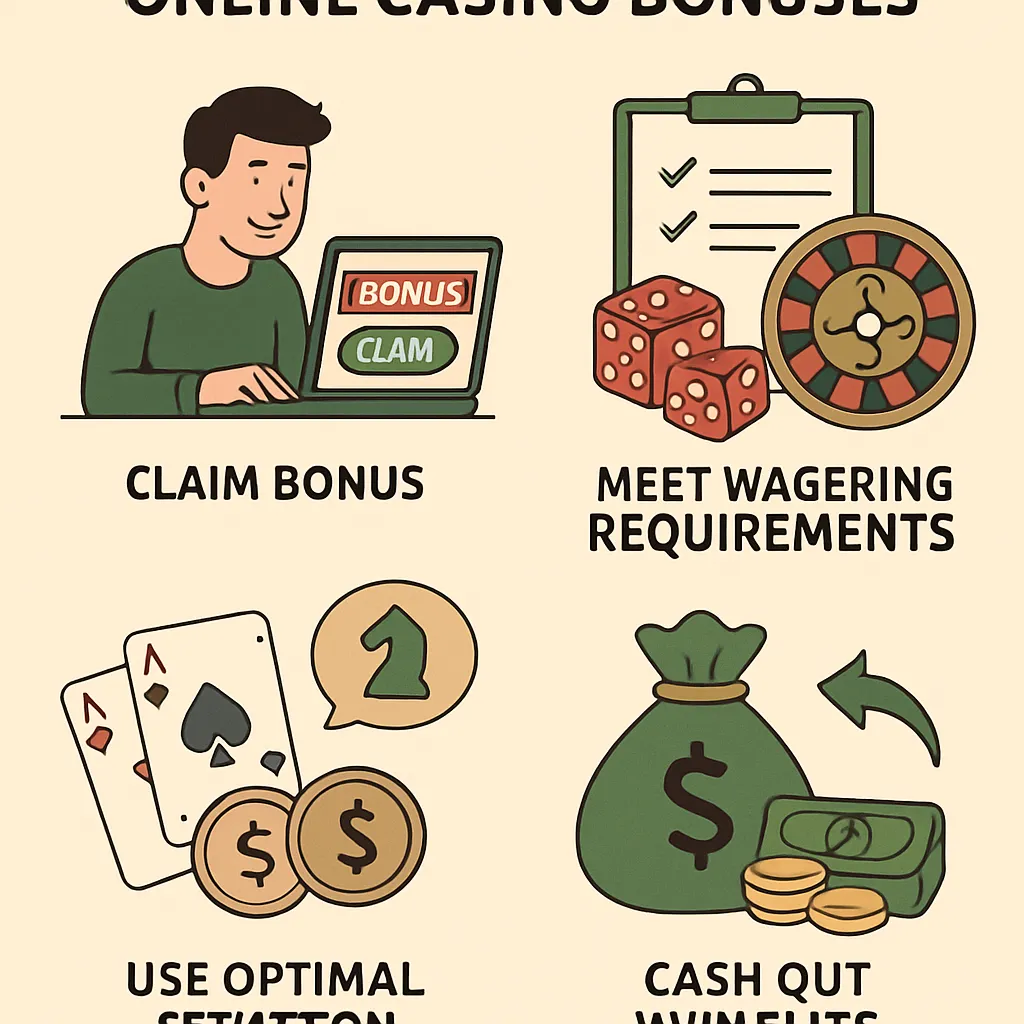Craps strategy: how to play to win at casino craps
2025-07-24

The estimated reading time for this post is 692 seconds
Craps is one of the most exhilarating and fast-paced table games in any casino, drawing players with its dynamic dice-rolling action and social atmosphere. In this guide, we’ll answer the core question: how can you play to win at casino craps? We’ll start with the fundamentals—what the game is and why it’s so popular—before diving deep into table layout, essential strategies, common mistakes, and frequently asked questions. Whether you’re a complete novice curious about your first bet or an experienced shooter looking to sharpen your edge, this article will equip you with the knowledge you need to play confidently at the craps table. Along the way, we’ll illustrate key points with clear examples, two numbered lists of actionable steps, and a detailed table of common bets and their payouts. By the end, you’ll have a comprehensive roadmap for maximizing your odds, managing your bankroll, and avoiding pitfalls that trip up many players.
Why Craps is Popular at Casinos
Craps stands out among casino games for its communal atmosphere and rapid pace. Unlike solitary games such as slots or blackjack, craps tables often brim with energy as players share in each other’s wins and losses. The sound of dice clattering and the chorus of “seven’s coming!” create an immersive experience that keeps both novices and veterans engaged. Additionally, the variety of bets—from the simple Pass Line to more exotic proposition bets—caters to all risk tolerances and play styles. Low-house-edge bets offer favorable odds for strategic players, while high-payout proposition bets appeal to thrill-seekers willing to accept steeper house advantages. Ultimately, the blend of strategy, chance, and social interaction cements craps as a perennial casino favorite.
Moreover, casinos often spotlight craps tables with promotions and pit bosses to attract crowds, further boosting its popularity. Tournaments and special events amplify excitement, allowing players to compete for prizes beyond their personal bankroll. With clearly explained house advantages and transparent payouts, newcomers appreciate craps as a relatively straightforward game compared to poker variants that require deep strategy. For experienced gamblers, mastering optimal betting patterns and money-management techniques can tilt the odds slightly in their favor, making craps one of the few table games where skill and discipline matter. As you delve deeper into this guide, you’ll see how understanding these dynamics empowers you to play smarter and enjoy the exhilarating world of casino craps.
The Craps Table Layout
Key Areas of the Craps Table
The craps table is divided into distinct zones where specific bets are placed. The central area, known as the “Pass Line,” runs around the table’s perimeter and is where players place their Pass and Don’t Pass bets. Just above the come-out line lies the “Come” and “Don’t Come” boxes, which function similarly but for rolls after the point is established. The rectangular region in the middle, labeled with numbers 4, 5, 6, 8, 9, and 10, is reserved for “Place” bets, allowing you to wager on specific point numbers. To the far right and left are small circles and boxes for proposition bets—single-roll wagers like “Any Seven” and “Hardway” bets. Finally, the “Odds” area sits directly behind the Pass and Come lines, where players can lay additional money at true odds once a point is set. Familiarizing yourself with these zones is essential to making quick, accurate bets during an intense roll sequence.
Knowing where to place your chips ensures they are recognized by the dealer and counted correctly, preventing costly mistakes. Dealers will call out each bet as it is placed, so precise chip placement in the designated area avoids confusion. Beginners should start with Pass Line and Come bets—both located on the table edge—before venturing into more complex zones. As you grow comfortable, adding odds bets behind your initial wager improves your expected return. Proper understanding of the layout also helps in spotting other players’ bets, contributing to the collective excitement of the table. In the next section, we’ll break down the most common bets, their payouts, and house edges in a handy table.
Common Bets and Their Payouts
Below is a table outlining the most frequently placed bets in casino craps, along with their typical payout ratios and house edge percentages. This information will help you choose bets that balance risk and reward according to your personal strategy and bankroll.
| Bet Type | Description | Payout | House Edge |
|---|---|---|---|
| Pass Line | Win on come-out roll (7 or 11); lose on 2, 3, or 12; point decided otherwise | 1:1 | 1.41% |
| Don’t Pass | Win on 2 or 3; push on 12; lose on 7 or 11; point decided otherwise | 1:1 | 1.36% |
| Come | Similar to Pass Line but placed after point is established | 1:1 | 1.41% |
| Odds (behind Pass/Come) | Additional bet at true odds once point is set | Varies by point (2:1 on 4/10, 3:2 on 5/9, 6:5 on 6/8) | 0% |
| Place 6 or 8 | Bet that 6 or 8 will roll before 7 | 7:6 | 1.52% |
| Field | One-roll bet: win if 2, 3, 4, 9, 10, 11, or 12 | 1:1 (2 pays 2:1; 12 pays 3:1) | 2.78% |
| Any Seven | One-roll bet on a 7 | 4:1 | 16.67% |
As you can see, the lowest house edge bets are Pass Line, Don’t Pass, Come, and Odds. Proposition bets like Any Seven carry steep house edges, offering high payouts but poor expected returns.
Essential Craps Strategies
Beginner-Friendly Strategies
New players should focus on simple bets with low house edges while they learn the game flow. Pass Line bets are the best starting point, offering a straightforward win/lose condition on the come-out roll. Backing up your Pass Line with maximum allowable Odds bets further reduces the overall house edge because odds bets carry zero advantage for the house. Avoid proposition bets, which may be tempting due to high payouts but yield very poor long-term returns. As you gain confidence, you can introduce Come bets, which mirror Pass Line advantages on subsequent rolls. Here are the fundamental steps every beginner should follow:
- Place a Pass Line bet before the come-out roll to participate in the main game action.
- Once a point is established, immediately place an Odds bet behind your Pass Line to minimize house edge.
- After a few rolls, add a Come bet to capitalize on fresh win/lose opportunities similar to Pass Line rules.
- Continue placing Odds behind each new Come bet for optimal payoff.
- Avoid high-house-edge proposition bets like Any Seven or Hardways until you master the basics.
By sticking to these five steps, beginners can enjoy steady, low-volatility play while learning the intricacies of the table. Over time, you’ll become comfortable recognizing when to increase wagers and when to walk away.
Consistency is key: avoid switching strategies mid-session based on short-term outcomes. Track your wins and losses in a simple notebook to identify patterns and adjust your approach between sessions rather than on the fly. Remember, no strategy guarantees a profit—while these guidelines optimize your odds, they cannot overcome the house edge entirely. The goal is to play longer, more consistently, and with reduced risk.
Lastly, simulate your bets online for free before risking real money. Many reputable casino websites offer risk-free craps practice modes, allowing you to internalize bet placement and timing without financial pressure. Once you feel confident, transition smoothly to live casino tables armed with the discipline and strategic foundation you’ve built.
Advanced Betting Techniques for Experienced Players
Experienced shooters often explore more complex wagers to leverage table dynamics and bankroll size. One advanced technique is the Hedge Strategy, which combines Pass Line and Don’t Pass bets to lock in small profits on each roll, regardless of the outcome. Another approach involves “Pressing” winning bets—incrementally raising your wager after each win to ride hot streaks while maintaining a predetermined loss limit. Advanced players also monitor table trends, such as consecutive point repetitions, to inform Place bet decisions. While trend watching cannot change the underlying odds, it helps in timing bets to the table’s momentum.
Some veterans use the 3-6-9 Strategy on Come bets: start with three units on the Come, press to six units after a win, then to nine, and back down to three after completing the cycle. This pattern seeks to capitalize on hot runs while protecting profits. Others blend field bets and Proposition splits—dividing a field wager across multiple proposition outcomes to mitigate variance. For those comfortable with higher variance, “Yo” (11) inside bets can pay 15:1 and encourage excitement, though should be used sparingly due to edge. Always confirm payout odds at each casino, as they can vary slightly by house rules.
Bankroll segmentation is critical for advanced play: allocate separate sub-banks for pass/come bets, odds, and proposition bets to avoid overexposure. Employ session stop-loss and stop-win limits; for example, cease play after a 20% gain or loss relative to your starting bankroll. This discipline preserves capital during losing streaks and locks in profits during upswing. Advanced bettors often use session logs to analyze their bet sequences, identifying which combinations yield the best returns over multiple sessions. In the next section, we’ll cover proper money management to complement these advanced techniques.
Maximizing Your Odds with Proper Money Management
Even the best strategies falter without disciplined money management. Start by setting a session bankroll separate from daily living expenses, and never exceed this predetermined amount. Divide your bankroll into equal units—commonly 50 to 100 units—so each bet represents a small fraction (1–2%) of your total funds. This unit-based approach smooths out variance and extends playing time, enabling you to weather losing streaks and capitalize on hot rolls.
Implement both stop-loss and stop-win rules: for instance, walk away after losing 30% of your session bankroll or winning 50%. These boundaries protect against emotional decisions made under stress and ensure you preserve gains. Track every bet in a simple spreadsheet or notebook, noting bet type, amount, outcome, and running balance. Reviewing these records between sessions reveals areas for improvement and highlights which bets contribute most to your profits or losses.
Avoid “bet chasing” by restricting yourself to no more than three consecutive bet increases after losses. If you hit this limit, pause and reassess rather than doubling down indefinitely. Conversely, when ahead, consider lowering your flat bet size to lock in winnings. Finally, play at tables with reasonable minimum bets tailored to your bankroll size; high-limit tables may be attractive but risk rapid depletion of funds if you encounter a bad streak. Proper money management transforms craps from a gamble into a disciplined game where strategy and psychology align.
Common Mistakes and How to Avoid Them
Recognizing Bad Bets in Craps
Many players gravitate toward bets with flashy payouts, unaware of the underlying house edge. Bets like Any Seven (house edge 16.67%), Hardway bets on 4 or 10 (9.09%), and Big 6/8 (9.09%) may pay high multiples but erode your bankroll quickly. Proposition bets in the center of the table carry the worst odds because they hinge on single-roll outcomes. Avoid tearsheet bets and any bet with a house edge above 5%, unless you’re strictly gambling for entertainment rather than value. Always consult the posted payout tables to confirm odds, as some casinos offer slightly different pay tables that further increase house advantage. Understanding which bets to avoid is the first step toward smarter play.
To illustrate the most common poor wagers, consider these five mistakes:
- Placing single-roll proposition bets excessively, chasing large payouts at the expense of expected value.
- Neglecting to take maximum Odds bets due to fear of larger wagers, missing out on zero-edge opportunities.
- Betting on Big 6 or 8 instead of placing the numbers, paying 1:1 instead of the superior 7:6 odds.
- Chasing losses with higher and higher bets without regard for unit-based bankroll segmentation.
- Ignoring table minimums and maximums, leading to frustration when unable to adjust wager size.
By steering clear of these five pitfalls, you’ll protect your bankroll and play longer. Awareness of house edge and payout structures enables you to prioritize bets that minimize expected losses over time.
Additionally, avoid superstitious behavior such as changing dice hands mid-shoot or betting on “hot” or “cold” numbers; craps outcomes are independent, and past rolls have no bearing on future results. Professional players focus on statistical probabilities and disciplined bet sizing rather than myths. If you catch yourself making an impulsive bet out of frustration or overconfidence, take a step back—pause, breathe, and revert to your proven strategy. Emotional control is as important as technical knowledge for sustained success at the craps table.
Avoiding Common Pitfalls for Beginners
New players frequently fall prey to table etiquette errors that can distract seasoned shooters and draw dealer attention. Placing chips incorrectly or betting after the dealer has called “No more bets” leads to disputes and missed opportunities. Always wait for the dealer’s cue before staking your wager, and stack chips neatly in the correct betting area. Another common mistake is overbetting relative to bankroll size, often triggered by the excitement of early wins. Beginners should commit to unit-based betting from the outset to avoid impulsive stake increases.
Many novices also misunderstand point cycles, betting on Come and Pass Line interchangeably without regard for current point status. Focus on one type of bet per roll sequence—either Pass/Come or Don’t Pass/Don’t Come—to simplify decision making. Resist the temptation to hedge bets on the opposite line; the minimal advantage gained rarely offsets the additional house edge. Finally, always ask the dealer politely if you’re unsure about wager placement or table rules; dealers expect beginner questions and appreciate respectful communication. Avoiding these pitfalls accelerates your learning curve and fosters a smoother, more enjoyable experience at the table.
Beginners should also recognize that losing streaks are inevitable; perseverance and discipline, not reactionary betting, differentiate successful players from frustrated ones. If you encounter an extended down cycle, consider reducing bet sizes or taking a short break to reset mentally. Practice under simulated conditions online helps familiarize you with common pitfalls before risking real money. By combining etiquette awareness, disciplined bankroll rules, and strategic restraint, beginners can circumvent typical traps and build confidence in their craps play.




